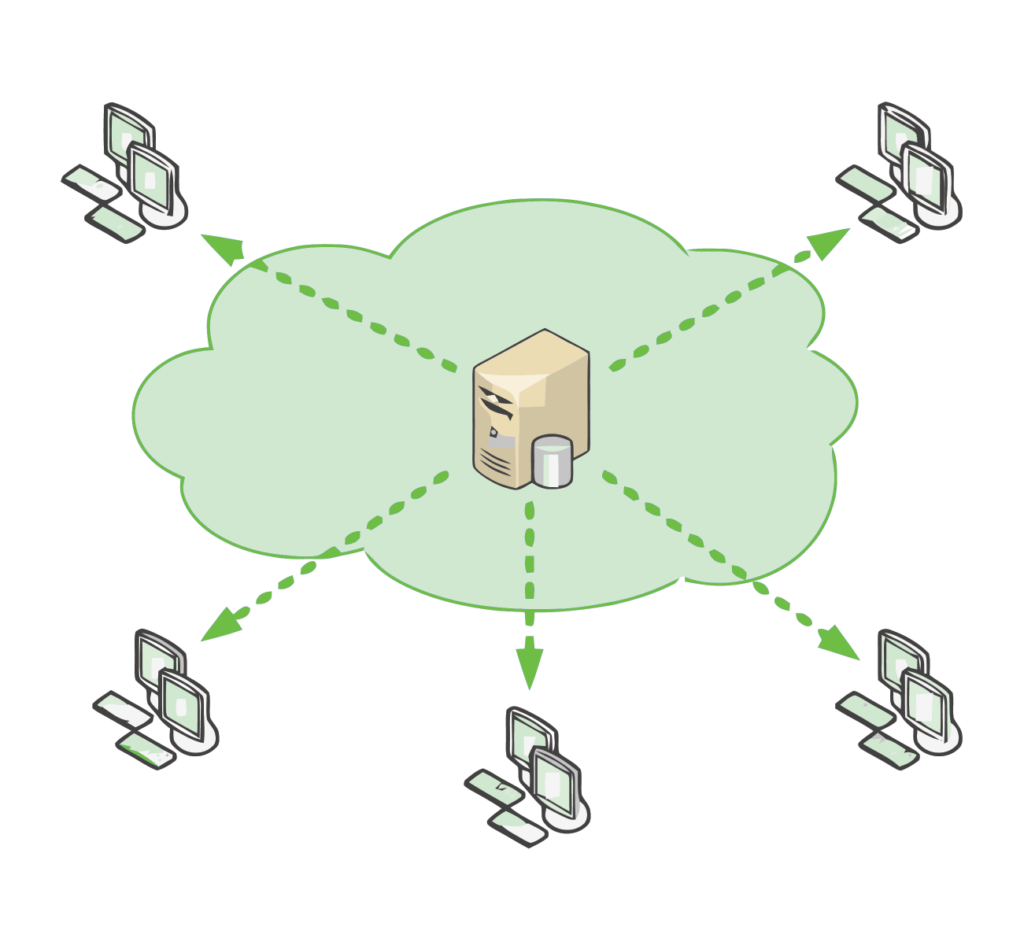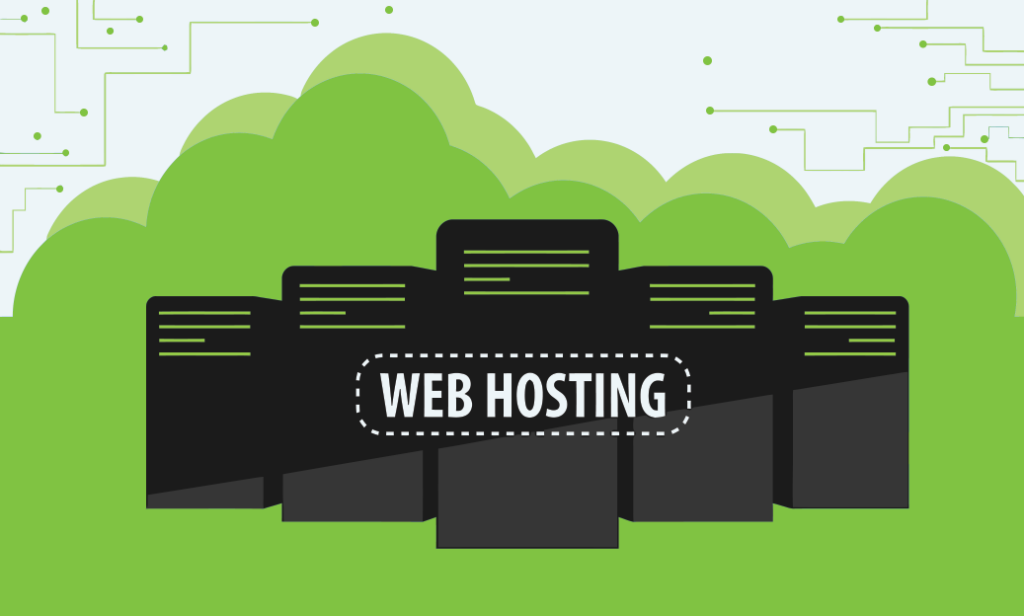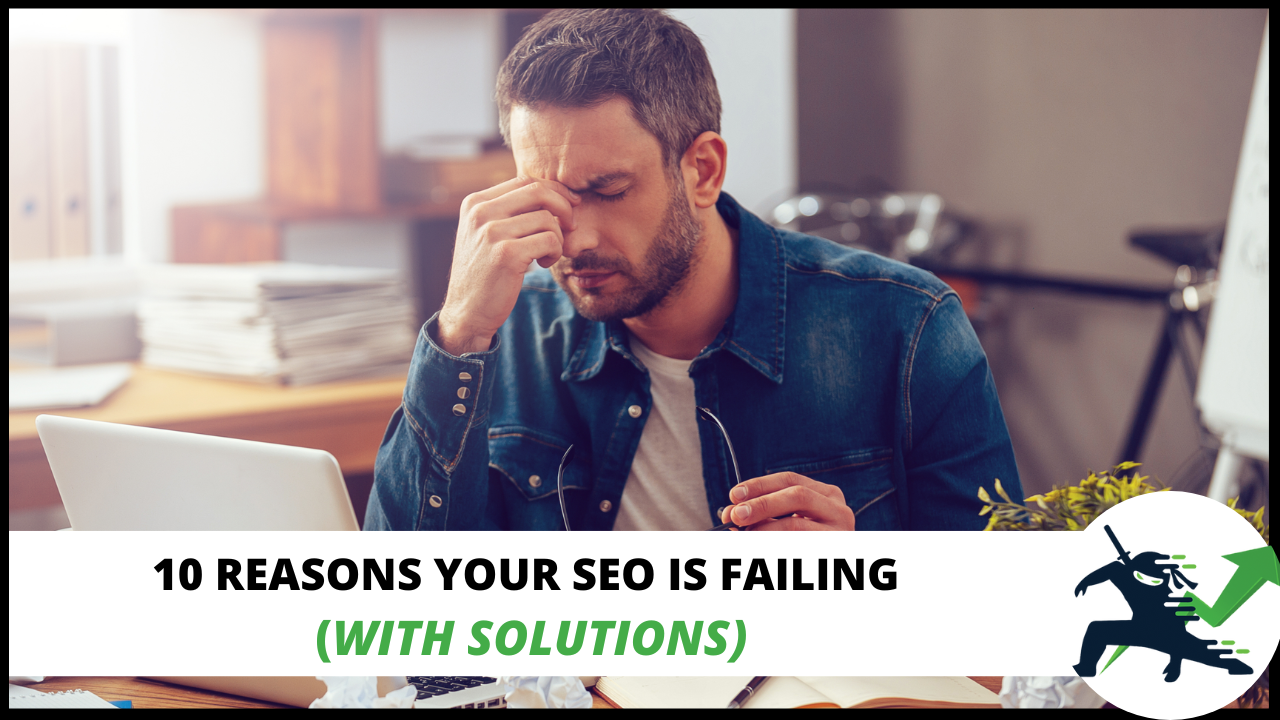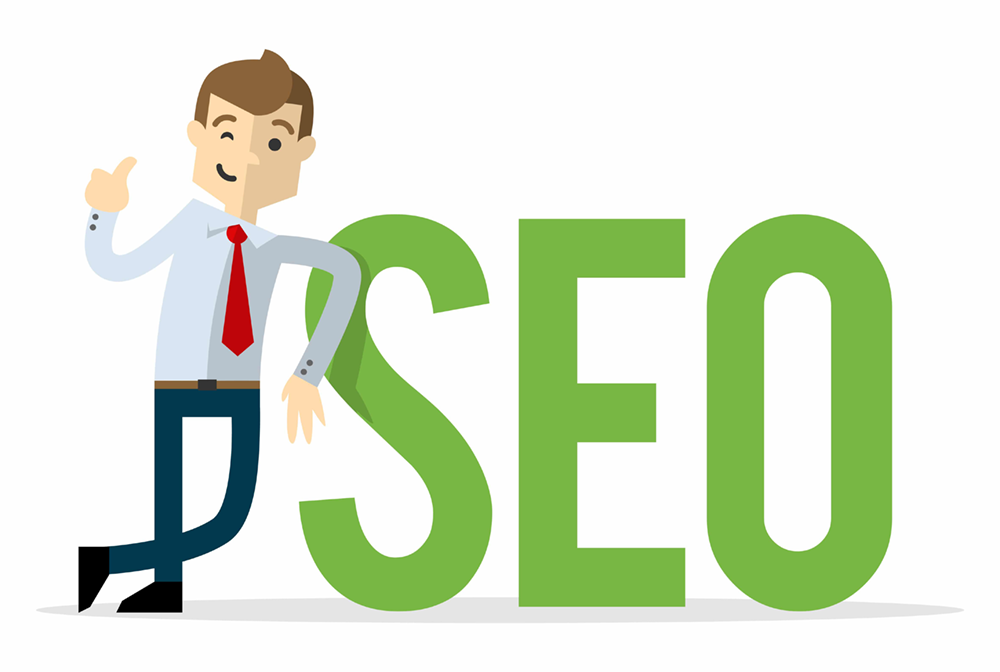SEO can be tough for beginners, especially when you don’t see results in the beginning. It can be disheartening, and it’s easy to fall into the trap of feeling like nothing is working. How do you even know if you are doing the right things…?
Well, in this blog post I am going to break down 10 real reasons why your SEO may be failing – and what to do about it! If you have these 10 things under control, then you are doing everything correctly.
You Aren’t Publishing Enough Content
I’m going to start with the most important focus of your time – especially in the beginning. Content is everything. I’ve talked at length about content and why it matters on this blog, but the short version is this:
Content is what brings you traffic and gets you ranked.
The more content you have, the more of an authority Google sees you as. And when search engines see you as an authority, they push your other pieces of content even farther. Writing helpful content is how you establish yourself as an expert in your niche for both search engines and real humans, too.

So, how often should you be posting? Well, there’s no one single answer. It depends on your niche and the competition. I’ve seen cases where posting once a month has ranked businesses #1. Likewise, though, I’ve seen times where it’s taken 5 blog posts per week.
To know for sure what Google expects from you, open a new Incognito window in Chrome. Then search to find the three largest blogs in your industry. These should be direct competitors to you, so if you’re a local business you’ll want to look for who’s ranking #1, #2, and #3 organically.
Next, write down the website URLs for each of these. Then head over to their blog pages, and take a look at how often they publish. You can find this out by looking at the post dates if it shows it on their blog page. If it doesn’t, clicking on each post can reveal this information. If the publication date still isn’t visible, check out their RSS feed to find out.
Then, all you have to do is this:
2X their publication schedule!
Some SEO experts will argue to match their schedule, but there’s a problem with this. These websites are already established and big players in your niche. They’ve built up a lot of authority and trust with search engines, which is why they are ranking #1.
So if you match their pace, you’re still going to be behind them. After all, they started running the marathon months, if not years ago. You want to speed past them to win.
After all, even if you get the same results they get…why not get more? As the old saying goes:
“If you do what the 99% do, you’re going to get the results the 99% get.”
So be a part of that 1% if you want to be a winner. By publishing more frequently, this sets you apart from your competition. Yes, don’t get me wrong: it’s a lot of work! But you can outsource your content production or systematize it so it’s easy for you to do.
There’s A Technical Problem With Your Website
Besides not having enough content, technical problems can prevent Google from showing you in the search results. Here’s a checklist of problems to check for:
- Do you have broken links on your website?
- Does your website have a SSL certificate?
- Does your website load correctly on different types of devices?
- Are any pages fundamentally broken?
- Are your WordPress plugins all working?
- Did you submit a sitemap to Google?
Take your time and check for these things. If you can’t definitively answer one of these questions, I recommend hiring a website developer to take a look at your website. Google will tell you if there’s any broken links on your site inside Google Search Console.
You can also submit a sitemap through Google Search Console. A sitemap is a special type of web page that lists all the other pages and posts on your website. If you’re using WordPress, Yoast SEO’s plugin can do this for you. It’ll also auto-update the sitemap as you publish new content. This ensures Google sees all your pages and posts.
Your Website Is Slow
Your website should load in under 5 seconds. Nobody is going to sit around and wait 15 seconds for it to load, and Google knows this. Slow loading websites are pushed down in the search results.
GTMetrix is a great free tool that allows you to test your website’s loading speed. You can choose different cities and countries to test it with. If your tests are coming back over 5 seconds, here’s some fixes I’d suggest trying:

Compress Your Images
Images are the biggest culprit when it comes to slow loading websites. You can use Smush to compress your images automatically. Good compression is when software decreases the size of your images without it being noticeable to the human eye.
Alternatively, TinyPNG is a great website I myself have used to manually compress images. It’s not as hands free as Smush, but the free version of Smush won’t compress images over a certain file size. If you use these two tools in combination, you can easily speed up all the images on your website in no time at all.
Use A Caching Plugin
Caching is when a web server stores files in a different way to serve web browsers more quickly. Essentially it increases your website’s response time, which results in faster page loading speeds. Because web caching stores your website’s data, it makes your pages load faster for a return visitor as well.
It’s very technical behind the scenes, but understand that it can improve overall load times and it’s definitely an optimization I recommend doing. LiteSpeed Cache is a free plugin that enables caching for WordPress. It also integrates with the next thing I am going to mention on this list, bringing me to that.
Implement A Content Delivery Network
A content delivery network (or CDN) can be complicated to explain, so I’m going to use an easy example. Let’s say your business is located in New York, and your web server is there too. Someone loading your website in Texas, for example, will have longer loading times because they are far away from the server’s location.

Using a CDN solves this problem by storing cached versions of your website across many different servers. When a visitor comes to your website, the CDN automatically pulls the website files from a server that’s closer to the individual. This can really help boost your SEO if you’re an online business, or one that isn’t restricted by only serving customers in one location.
CloudFlare is an excellent CDN that offers a free option. You can easily get set up with one in minutes, although it can be a bit technical if you’re not too computer-savvy. I recommend having a developer help with setting this up.
Try To Remove Unnecessary Plugins
Having a lot of plugins can really slow down a WordPress website. Look through your plugins and see if there are any that you aren’t using. If yes, uninstall them.
As a general rule, you never want to exceed 20 plugins. If you’re using shared hosting with a starter plan through a company like GoDaddy or HostGator, you should have no more than 5 plugins. I’ll talk more about hosting in a bit here, but this is a potential culprit to check.
Switch To A Faster WordPress Theme
Some themes are built to look great, but barely function for SEO. I have a saying here at Local Rank Ninja that I’ve often told clients:
A website designer isn’t an SEO.
There’s no point to your website looking sleek if it doesn’t deliver and achieve your business goals!
Some WordPress themes I can recommend for SEO include:
- Airi
- Astra
- Blocksy
- Customify
- GeneratePress
- Hello Elementor
- Hestia
- Mesmerize
- Neve
- OceanWP
- Page Builder Framework
- Schema
- X Theme
- Zakra
Of course, always do your own research. These may very well change over time. Some free themes are limited feature-wise unless you pay for a premium version.
On this website I use Thrive Theme Builder for my theme, and my load time is under 5 seconds. It is a paid theme, but I find that Thrive Architect is the best paid page builder built for businesses in my experience.
Pro Tip: You can always do a little reconnaissance and try to see what theme your competitor has. WP Theme Detector is a great free tool that lets you check what theme a website has.
Consider Getting Dedicated Hosting
If you’ve been following me for a while, you’ll know that I’m self-hosting all my websites. Shared hosting is god awful nowadays, and I despise the big hosting companies for several reasons. There’s issues you will inevitably run into if you cheap out on hosting.
For starters, when you buy a shared hosting plan you’re on the same server as hundreds of other websites. This means if something goes wrong with one website, the entire server gets bogged down. Additionally, there are performance and resource limits with the cheaper hosting plans.

If you run an e-commerce website, for example, you are going to have terrible page loading times. WooCommerce lags like hell with shared hosting. It got to the point where it was affecting my bounce rate and conversions.
Dedicated hosting is when you get your own server. Yes, it gets much more expensive than shared hosting. But it is worth it if you can afford it.
Shared hosting typically runs between $8 – $10 a month. Dedicated hosting runs anywhere from $20 – $100 depending on what host you choose.
I’m going to be launching a hosting service specifically optimized for SEO soon, so make sure to get notified if you don’t want to miss anything.
Your Bounce Rate Is High
This can be another culprit to seeing poor results with SEO. Google looks at how long users stay on your website. If they’re leaving right away, this sends a signal to the algorithm that your content or site is low quality.
Make sure your pages meet the expectations you set on the search results page with an accurate meta description, title, and keywords. If you’re claiming to answer their question, you need to be answering it!
I know this sounds obvious, but you’d be surprised how many instances I’ve seen of business owners messing this up.
Additionally, look for anything off-putting that may make prospects decide you aren’t for them. Sometimes a bad call to action can be an issue. Try changing the color and position on the page of your primary CTA.
I’ve also encountered poor looking websites leading to a high bounce rate. Try to get some feedback from real customers in your industry. You can use a service like User Testing or Amazon Turks to get real input from unbiased sources.
Check individual pages to see if there’s one that has a higher bounce rate than the rest of your website. You can find this information inside Google Analytics by going to Behavior -> Site Content -> Landing Pages.
Your Authority Isn’t Built Enough
Remember: search engines rank websites #1 that are an authority in their niche. Make sure to be building E.A.T. (Expertise, Authority, and Trust) on your website. Having an author bio box like I have on this page is a great way to build relevance around your name. I’ve covered free plugins that do this before on this blog.
You’re Missing An Element Your Competition Have
This one gets overlooked a lot. Do some spying in Incognito mode and take a look at the top 3 ranking results for your primary service or product. What are on-page elements they all have?
Try to find similarities between the top 3 websites, and implement them on your website too.
A perfect example of this is a scroll to top button. I was working with a client a while back that wasn’t ranking no matter what I did. I was so confused as we were doing everything right…at least on paper.

If you aren’t familiar, a scroll to top button is a little button that usually appears in the bottom right of a website. When you click it it’ll automatically scroll all the way to the top of the page for the user. Believe it or not, this change was all it took to bump us up to 4 positions in search!
You Aren’t Doing Enough Promotion
If you’re doing things right (and by right I mean publishing content consistently) make sure you are promoting it. There’s no point if your content doesn’t get viewed by real humans in your niche. In the beginning it can be an uphill battle, so getting the snowball rolling in any way you can is key.
Share your posts on social media. You can use a tool like HootSuite to automatically publish to multiple profiles at once. I recommend attaching your featured image to the post. Sometimes this won’t pull correctly.
Use emojis to get people’s attention who are scrolling.
Content Syndication
A great hack that I’ve used over the years is content syndication. This Is where your content is automatically shared and spread the web anytime you publish. IFTTT is a great option for this.
While it’s technical to set up, you can pay someone on Fiverr or SEOClerks to do this for you. Then you can sit back and don’t have to worry about pushing your content out.
You Aren’t Mentioned Enough Across The Web
This goes with building authority, but I wanted to include it as its own point. Promote yourself in your niche. Go on podcasts, collaborate with other businesses, and have discussions online.
If you are a local business, you need to do citations as they are a crucial part of the local SEO process. A citation is a submission of your business information to a directory or website. I’ve talked about citations before, but OmniCore has a great list of all the necessary citations you should pursue.
I’m not going to lie, citations can be a massive time suck. Manually submitting each listing is a pain. I highly recommend outsourcing this. Yext and WhiteSpark are two great services that do citations for you.
Your Strategy Is Wrong
People hate hearing this, but it needs to be considered. If you’ve been at SEO for a year and you’re not seeing results, it’s very possible you’re doing something wrong. Local SEO Shuriken is my step by step course where I share proven strategies and the best process for local SEO.

Ask yourself what you are spending 90% of your time, and if it isn’t content you’re doing something wrong. I’m going to be blunt. There’s a lot of misfocus and misinformation in the SEO space. Yes – tools are cool. But they don’t move the needle.
Stop spending your time inside SEO tools and spend it in Google Docs writing. When I was first learning SEO, this shift is what enabled me to rank.
You Haven’t Given It Enough Time
Finally, you may not be giving it a fair chance. Be patient and stay with the program. I know it can feel frustrating when you’re putting a lot of work in and not seeing results right away.
SEO takes 6 months to a year to see results.
This is the generally agreed upon estimate in the SEO space. I’ve seen it take as little as a month, and as long as a few years. But don’t panic! If you’re following the proven SEO formula you’ll get results.
Want To Be A SEO Ninja…?
If you want to learn how to easily rank any website #1, check out Local SEO Shuriken. It’s the best course I’ve ever made and it has helped hundreds of business owners get the results they want with SEO. If you want to learn powerful and effective SEO strategies, this course is for you.



